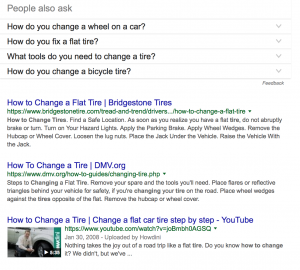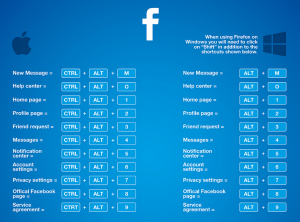Website migrations are sometimes a necessary evil that businesses must carry out.
They require intricate planning and thoughtful decision making to execute properly. This is because there are a lot of moving parts to consider, such as user experience, SEO, and other key factors.
Luckily, you have us to help you figure out the complexities of a website migration, and we even include a comprehensive checklist for you to follow along with!
Let’s further examine what a website migration entails, key considerations when you search for a web migration service, and the common mistakes people make when conducting a migration so you can avoid them.
What Is a Website Migration?
A website migration refers to substantial changes made to a website that cause the website to move from one environment to another. The process of website migration typically refers to a change in the website’s structure, content, design, location, or platform.
Website migrations can cause some significant disruptions in SEO and put your website up against other risk factors if the migration is not performed properly.
In other words, businesses should have a good reason to take on the challenging process of website migration.
5 Reasons to Conduct a Website Migration
Here are a few common reasons why you may need to perform a site migration.
You’re Changing Your Site’s Navigation, Design, or Structure.
Reworking your entire site is not something you should decide to do without prior planning and in-depth consideration. A good reason to conduct a site migration is if you believe your conversions or sales aren’t good enough because of your website design or customer journey.
Before you jump into site migration for these reasons, consider proving it by making sure your conversions and sales problems aren’t due to simple design or architecture-related causes that can be easily fixed.
Your site’s taxonomy can be substantially impacted by structural and design changes, which causes a change to the site’s navigation, user journeys, and internal linking.
Major design updates include significant copy changes, media changes, and code changes that impact the entire look and feel of a website.
You’re Moving to a New Platform or CMS.
You can lose sales when you have an outdated CMS platform. You don’t want to stay on a CMS that limits what you can do or that is disruptive and frustrating to your visitors.
Choosing a new CMS platform and migrating your content over to the new site is sometimes your only option to enhance your marketing and boost sales.
You’re Adding a Mobile Version.
Mobile responsiveness is now more important than ever since most web searches take place on mobile devices.
If your current platform doesn’t allow you to properly optimize for mobile, then it may be best to consider a website migration. Without responsive design, you could be losing a lot of mobile visitors to your competitors.
You’re Changing Your Domain Name or HTTP.
When you are in the process of rebranding, you may decide to change your domain name. This is a big decision, and you should thoroughly consider the benefits a new domain name would bring to your business.
HTTPS protocol helps to protect user information. If your site isn’t equipped with HTTPs, then most browsers will pop up a warning letting the user know the page they are visiting is unsecured. This may cause them to bounce from your site.
Switching over to HTTPS is a good reason to start website migration.
You’re Moving to a New Server.
Server performance is essential to the functionality of your website. Poor server performance can hold back your business if you’re losing uptime.
Think of all the potential customers who would abandon their cart or check out your competitors’ sites if your site crashes. That’s a lot of potential revenue being wasted.
Research hosts to see which one is best for you, and look up reviews to get an idea of how well their server performs.
Beware of the 5 Mistakes of Website Migrations
Website migrations are relatively easy to mess up. They take careful planning and a fair amount of time and effort. You can avoid these mistakes by being aware of what you can do to mitigate them.
Here are six common mistakes people make before, during, and after website migration:
They Have an Unclear Strategy.
Site migrations will fail from the beginning without a clear strategy and realistic objectives.
To combat failure, you must make sure you have measurable objectives that help you understand the impact of the migration after you launch.
Most often, your objectives should be to maintain traffic and revenue levels. In some cases, objectives can be raised higher, but it should be a secondary objective to promote realistic expectations.
They Don’t Plan Well and Aren’t Flexible.
It is necessary to have a detailed project plan as soon as possible to help lessen delays in the migration process. Your plan should include time and resources that are allocated to unforeseen circumstances that may arise.
This means you need flexibility with your plan, which will help you to accept that delays happen.
A good practice is to avoid planning your launch in a peak season when you won’t have time to resolve issues as they come up.
They Have a Limited Budget or Limited Resources.
You should make sure you have a proper estimate of the time and effort required to successfully complete your website migration.
If you have a limited budget, it can be detrimental to go ahead with a migration that has a high likelihood of failing to meet its set objectives. This can even cause revenue loss.
Companies that don’t plan to have 20 percent more resources than the project requires risk jeopardizing the success of the site migration.
They Don’t Respond to Bug Fixes in a Timely Manner.
Bug fixes on a new site are a given. Some bugs need to be fixed immediately since they can really mess with the operation of your site.
A slow response to serious technical problems can be disastrous and take quite a bit of time to recover from.
They Don’t Seek SEO or UX Consultation.
Website changes require weighted decisions from a user experience (UX) and search engine optimization (SEO) perspective.
For example, if you choose to remove a lot of content and links in the migration process, then you risk damaging the site’s SEO by removing keywords that are essential to your business.
On the UX side of things, having too much copy and little-to-no images often has a negative impact on user experience. This can cause your conversion rate to drop.
The best way to avoid these common pitfalls on your site during a migration is to seek the help of experienced UX and SEO consultants. With these consultants, you can stay up to date on the consequences of every single change that takes place on your website.
5 Things to Look for When Shopping for Website Migration Services
Website migration services may be your best option when it comes to making big changes on your website. Here are five things to consider when you start searching for website migration services and tools:
Find a Service That Plans Out Your Website Migration.
As we previously mentioned in this article, detailed migration plans are essential to your success. Select a website migration service that helps you craft your plans and sees it all the way through to post-launch.
Your migration service should be able to help you manage your expectations and give you a more accurate timeline when they provide you with an assessment and plan to meet your website migration needs.
Make Sure They Have Pre-Launch Site Crawling.
A migration service shouldn’t merely assess your site without crawling the stage site and the live site. Crawls and site audits can help SEO migration pros to make the best recommendations that ensure the continuity of your organic presence.
These recommendations can ultimately keep any problems that arise at bay.
Ensure They Have the Technology to Backup your Site.
Losing all of your data and information is the worst scenario possible.
For peace of mind, select a service that offers backup. With backup, a copy of your site is kept prior to the launch of your new site. This ensures that you can go back to preserved content if you need to.
Choose a Service That Conducts Analysis.
Good web migration services can help you to predict and track the impact of the migration. This gives you greater insight into what to expect from the website migration from professionals.
Inquire about how your migration team collects data and see how they use it. If they’re properly using analytics tools, they should be able to show you big wins following your migration.
Find a Service With Good Communication.
Having a team that is in constant contact with you is essential during the web migration process. You should seek to find a company that offers you personalized service and keeps you updated on what’s going on every step of the way.
This can be difficult to gauge when you are shopping around for services. But if you make sure to check reviews and you ask the right questions, you can find a company that will provide you with great communication.
Your Website Migration Checklist
Following a website checklist allows you to stay on track and finish your migration on time.
Use this checklist during your website migration to help you complete each task correctly the first time around.
Pre-Launch
- Make a plan.
- Crawl your former site and monitor files.
- Know which pages are your top performers.
- Conduct tests.
- Make sure each version of your site is registered in Google Search Console.
- Block access to your new site until it is ready to launch.
- Crawl your new site.
- Compare server performance between your old site and your new site.
- Set up analytics.
- Prepare your redirects, if needed.
- Prepare your campaign URLs.
- Set up your URL parameters.
Launch Day
- Remove site blocks.
- Enable and test redirects.
- Test your internal links.
- Kickstart your web analytics.
- Refresh your new site’s robot.txt setting.
- Submit your new sitemap.
Post Launch
- Audit your new site.
- Check the site’s performance.
- Validate your redirects.
- Make sure your ads and third-party extensions are correct.
- Implement your updated campaigns.
- Monitor the ranking of your new URLs.
- Troubleshoot your site and fix bugs.
Site migrations are a big undertaking, but using the checklist we provided should make the process run more smoothly and help to mitigate risks.
Although site migrations can be a pain, remember that they are necessary and can provide big benefits for organic search, user experience, and design when they are carried out correctly.
Digital & Social Articles on Business 2 Community
(52)
Report Post








